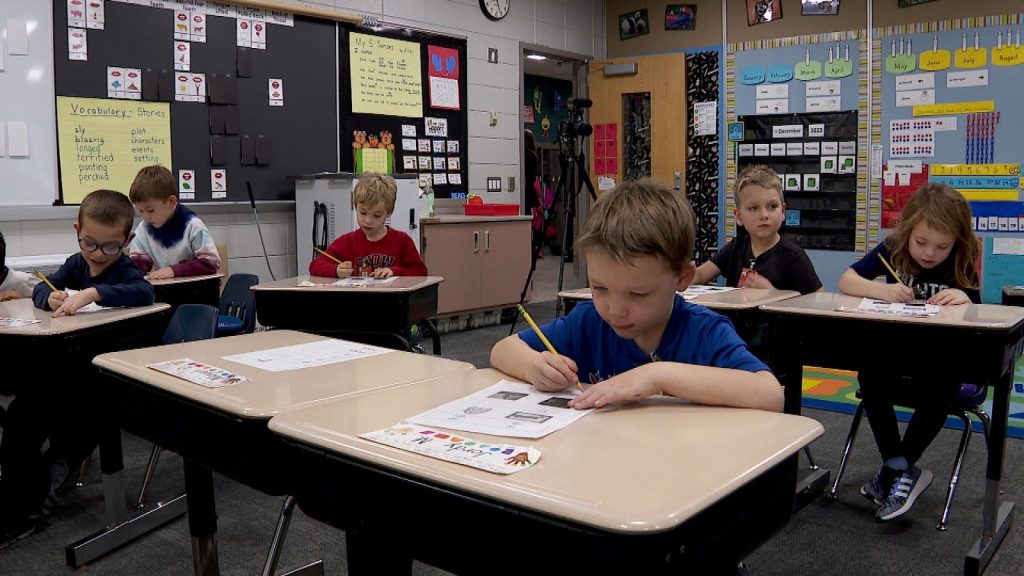Structured Literacy Improves Reading Scores in Osseo Area Schools
A new literacy program, made possible by Minnesota’s READ Act, is making big gains for early learners in Osseo Area Schools.
At Rush Creek Elementary, Linda Schwartz’s kindergarten students are learning to read. The lesson began with practice on the letter “r.”
“Rrr.. od. Rod,” Schwartz sounded out along with a chorus of students. The class said the word again, pounding their fists in their palm to emphasize the word: “Rod!”
She repeated the activity with other, similar words. That included other three-letter “r” words like red, rat, rag and rip.

Kids in Schwartz’s class use mirrors to practice sounding out letters.
That practice is just one piece of the Early Child Educators training that Schwartz is implementing in her classroom. The Minnesota Department of Education describes that training as a way for teachers to help build a foundation in early literacy before learning to read or write.
“We are listening for sounds, we are playing with sounds, we are putting sounds together to make words,” Schwartz said. “Then, we’re moving to writing words.”
As a part of the READ Act, districts will soon be required to provide their teachers with structured literacy training. Osseo Area Schools – District 279 is one of the first districts in Minnesota to implement it.
READ Act Background
The Read Act, also known as the Minnesota Reading to Ensure Academic Development Act, was signed into law in May. Minnesota education officials touted the accomplishment Friday morning at Rush Creek Elementary.
“With necessary tools, it empowers them to expertly teach foundational reading skills, instilling confidence in students as they see tangible progress in their reading abilities,” said Willie Jett, commissioner of the Minnesota Department of Education.
Jett, an Osseo Schools graduate, said its already working in its early stages in several districts, including Osseo and Moorhead.
“We are witnessing gains, even against pre-pandemic levels,” Jett said.
Among the data, Edinbrook Elementary School’s fourth grade reading proficiency rates rose from 17.1 percent in 2019 to 30 percent in 2023. At Fernbrook Elementary, third grade reading proficiency rose from 33.3% in 2019 to 44.8% in the 2022-23 school year.
Most Minnesota teachers classified as “phase one” aren’t required to complete professional development until July 2025. Those classified under “phase two” don’t have to complete it until July 2027.
Inside the Classroom
Classrooms in Osseo were some of the first to independently implement that training.
Schwartz said its more scientific than past practices and feels like less of a guessing game. The practice is flipped– learning sounds first, then letters.

After an interactive lesson, Schwartz’ kindergarteners practice writing the words and letters they learned.
“I think my reading instruction has changed to be thinking about how listening and sounds is where reading begins,” Schwartz said.
She said its different, but the change is paying off.
“It is a slow process of adding, adding, adding, adding and building, but its been exciting to see the change. The kids are excited. They are learning, I’m learning, and it is very exciting to me,” Schwartz said.
More information about the READ Act, including frequently asked questions and requirement information, are available on the state’s website.
See also: Rush Creek Elementary Hosts Science Museum of Minnesota


